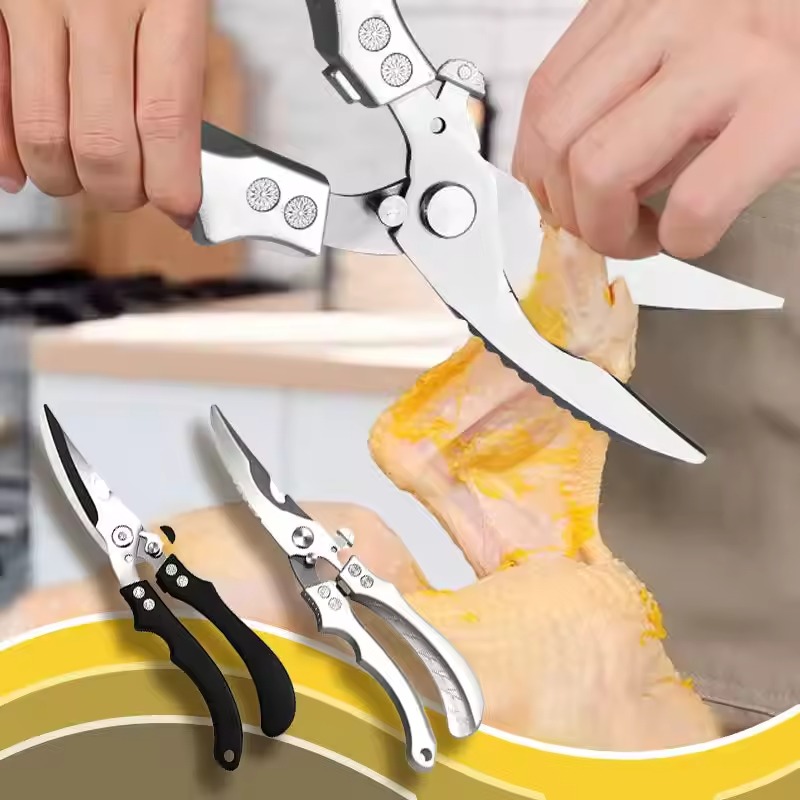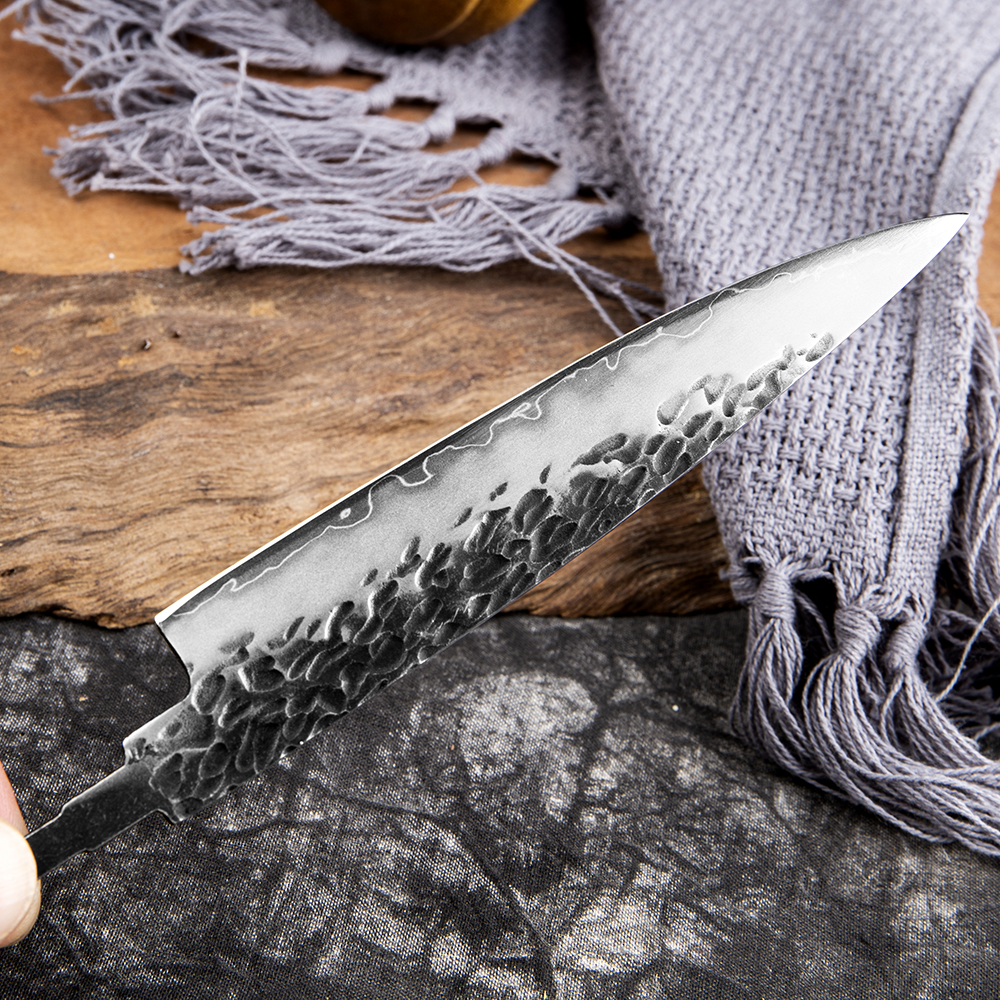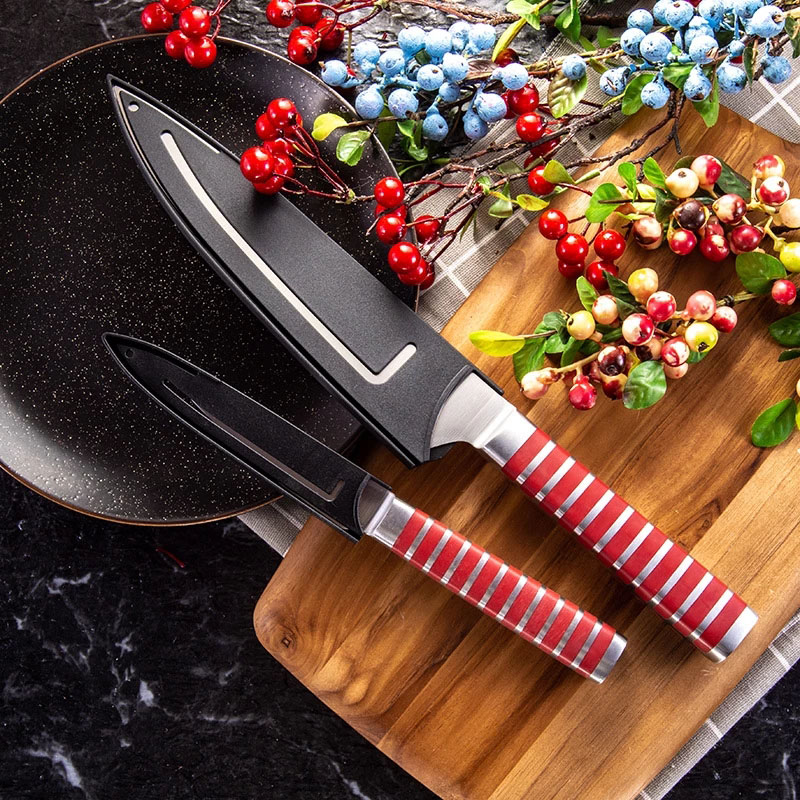Introduction to Kai Kitchen Knives
Kai kitchen knives hail from Japan, known for precision and quality. These knives are popular among both professional chefs and home cooks. Owning a Kai kitchen knife means investing in a tool that combines tradition with modern technology. In this introduction, we’ll explore what makes Kai knives a cut above the rest.
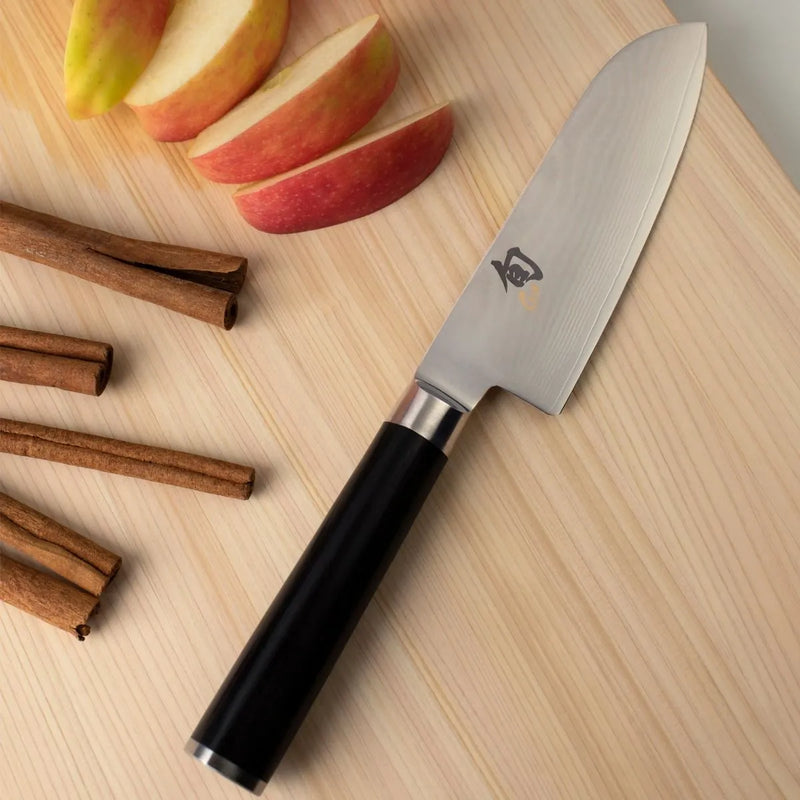
Craftsmanship is at the heart of Kai kitchen knives. Each blade reflects generations of fine-tuning. The knives boast high carbon stainless steel that keeps edges sharp longer. Handles are designed to fit comfortably in your hand, ensuring a secure grip. With a range of sizes and styles, there’s a Kai knife for every kitchen task.
Kai kitchen knives embody durability and versatility. They adapt to various cutting tasks, from dicing vegetables to slicing meats. The brand has built a reputation for producing knives that balance sharpness, comfort, and durability perfectly. In the sections to come, we’ll discuss the essential features of these knives, how to choose the right one for your needs, and much more.
Essential Features of Kai Knives
Kai kitchen knives are renowned for their exceptional qualities. Let’s delve into two pivotal aspects: the blade’s material and sharpness, and the comfort and grip of the handle.
Blade Material and Sharpness
The blades of Kai knives use high carbon stainless steel, which is crucial for maintaining long-lasting sharpness and resistance to corrosion. This material ensures that each cut is precise and effortless, highlighting the craftsmanship of Kai knives. The fine edge of the blades requires less frequent sharpening compared to others, making them a preferred choice for continuous culinary tasks.
Handle Comfort and Grip
The handles of Kai knives are crafted with utmost attention to ergonomics. They are typically made from high-quality materials such as Pakkawood or reinforced polymers, providing both durability and a comfortable grip. The design conforms naturally to the contours of your hand, ensuring safety and reducing hand fatigue during long periods of use. This thoughtful design results in a stable and controlled cutting experience, enhancing the overall functionality of the knives.
How to Choose the Right Kai Knife
When selecting a Kai knife, it’s important to assess various factors. The array of models and your specific cooking needs determine the ideal choice.
Analyzing Different Models
Kai offers a diverse range of knife models. Each designed for specific tasks. For example, chef’s knives cater to versatile cutting, while paring knives excel in peeling and slicing fruits. Santoku knives, with their unique shape, are perfect for precision work. Nakiri knives are unmatched for vegetable chopping.
To choose well, compare the blade lengths and weights. Some prefer heavier knives for sturdy control, while others opt for lighter ones for agility. The blade’s shape and edge also matter. A straight edge knife performs well in push-cutting, while serrated edges are great for bread and tomatoes.
Considering Your Cooking Needs
Think about the foods you often prepare. If you slice a lot of meat, a carving knife or a chef’s knife might serve you best. If you regularly work with vegetables, a Santoku or Nakiri could be the better option.
Consider your skill level too. Beginners may benefit from a small, manageable knife. Seasoned chefs might look for specialized knives to complement their skill set. Also, think about how much attention you’re willing to devote to maintenance. Some Kai knives require more frequent care to keep them at peak performance.
Finding the right Kai kitchen knife revolves around understanding the precise tasks you’ll tackle with it. By analyzing different models and considering your cooking needs, you can select a knife that not only enhances your culinary skills but also brings joy to the preparation process.
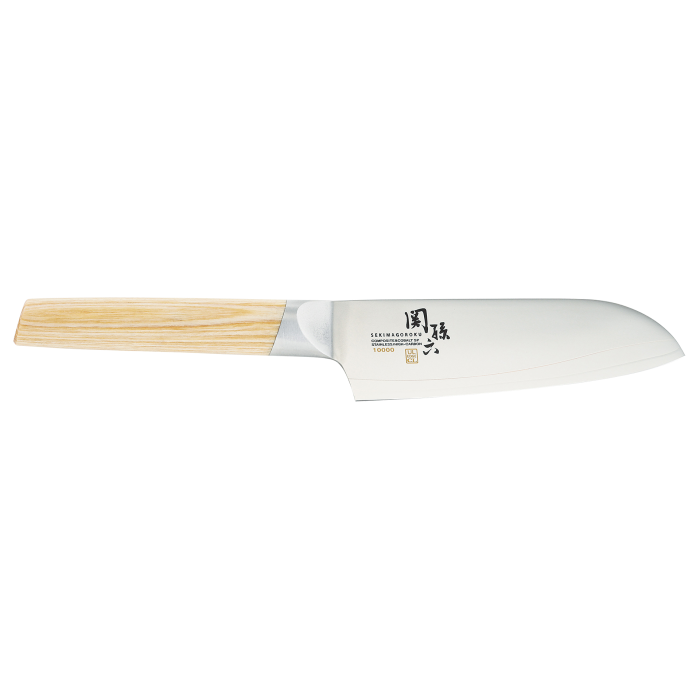
Proper Techniques for Using Kai Knives
Properly using a Kai kitchen knife ensures precision and safety in the kitchen. These knives, celebrated for their quality, demand specific techniques to fully utilize their potential. This section covers both basic and advanced methods to help you master the Kai kitchen knife in various culinary tasks.
Basic Cutting Techniques
Using Kai kitchen knives starts with mastering basic cuts. Here’s how you can make the most of your Kai kitchen knife:
- Hold the knife correctly: Grip the handle with your dominant hand, placing your thumb and index finger on opposite sides of the blade’s base. This provides control and stability.
- Use a stable cutting board: Ensure your cutting board is stable and secure to avoid slips.
- Rocking motion cutting: Ideal for herbs and vegetables. Keep the tip of the knife on the board and rock the blade up and down.
- Slicing: Pull the knife towards you, slicing through the item. This is great for meats and larger veggies.
- Dicing: Make vertical and horizontal cuts into the item, then slice across to create uniform cubes.
These techniques, when applied using a Kai kitchen knife, result in cleaner cuts and a more enjoyable cooking experience.
Advanced Slicing Skills
Once you’ve mastered basic techniques, you can explore more advanced skills:
- Julienne cut: Useful for stir-fry dishes and salads. It involves cutting food into long, thin strips.
- Chiffonade cut: Best for leafy vegetables and herbs. Stack leaves, roll them tightly, and slice them into thin strips.
- Dice fine ingredients: For dishes requiring finely diced ingredients, use precise, close cuts to ensure uniformity.
- Deboning meats: A Kai kitchen knife is perfect for deboning meats due to its sharpness. Make smooth cuts along bones.
- Filleting: Separate fish from skin and bones with careful, sliding cuts under the fillet.
Developing these advanced skills will allow you to tackle complex recipes and enhance your culinary creations using your Kai kitchen knife.
Maintenance and Care for Kai Knives
Caring for your Kai kitchen knife is essential to its longevity and performance. Proper maintenance not only extends the life of your knife but also maintains its precision and safety in use. In this section, we’ll go over cleaning and sharpening practices that are best suited for Kai knives.
Cleaning Best Practices
To keep your Kai kitchen knife in top condition, follow these cleaning guidelines:
- Wash by hand: Always wash your Kai knife by hand with mild soap and warm water.
- Dry immediately: After washing, dry your knife with a soft towel to prevent water spots and rust.
- Avoid dishwashers: The harsh environment inside a dishwasher can damage the blade and handle.
- Store properly: Use a knife block, sheath, or magnetic strip to store your knife, keeping it sharp and safe.
By adhering to these practices, you protect your investment and ensure that your Kai knife is ready for your next culinary task.
Sharpening Your Kai Knife
A sharp knife is a safer knife. Here’s how to keep your Kai knife’s edge perfect:
- Use the right tools: Invest in a quality whetstone or honing rod designed for Kai knives.
- Regular honing: Honing realigns the blade’s edge and should be done often, depending on use.
- Periodic sharpening: Sharpen your knife when you notice it’s not performing as well, typically every few months.
- Follow angles: Maintain the correct angle for your specific knife model when sharpening to ensure the best edge.
Remember, regular maintenance not only enhances the cutting experience but also guards against premature wear and tear on your Kai kitchen knife. By keeping it clean and sharp, you’ll enjoy the precision cutting that Kai knives are celebrated for.
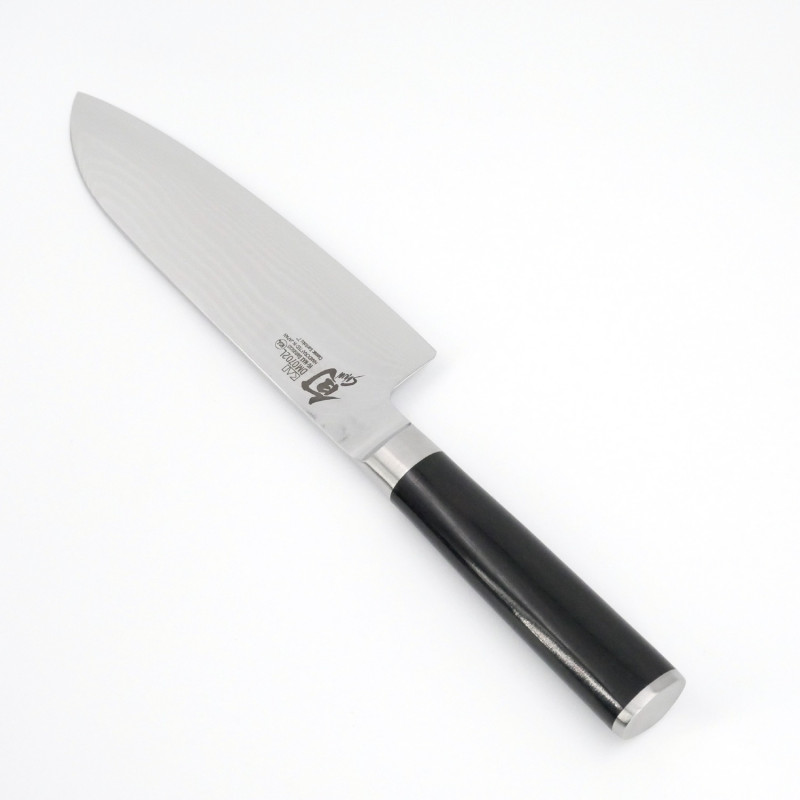
Comparing Kai Knives with Other Brands
When exploring kitchen knife options, comparing Kai knives with other brands can provide insight into their unique value and performance. Here we’ll analyze both the price and overall utility against competitors to help guide your purchase decisions.
Price and Value Analysis
Kai kitchen knives generally carry a higher initial price tag. This is due to the premium materials and meticulous craftsmanship involved in their production. However, the long-term value is significant. These knives maintain sharpness longer and require less frequent replacement or repair. Compared to other high-end brands, Kai knives offer a balanced equation of cost and lasting quality, making them a worthwhile investment for serious cooks.
Performance Comparison
Performance-wise, Kai knives stand out for their exceptional sharpness and precision. This is supported by their high carbon stainless steel blades. In comparison with other brands, Kai knives provide smoother cutting with less effort. This contributes to more precise cuts and less user fatigue. Users often find that Kai knives outperform many competitors in terms of ergonomics and balance. The feedback from various user reviews highlights the ease of handling and reduced strain even during prolonged use. By considering these factors, Kai knives present themselves as a top contender in the realm of quality kitchen cutlery.
Where to Buy Kai Kitchen Knives
Finding a place to purchase Kai kitchen knives is easy when you know where to look. Whether you prefer the convenience of online shopping or the hands-on experience of a physical store, there are multiple options to consider.
Online Stores and Physical Retail Recommendations
- Official Kai Websites: Start with the brand’s official website. It often has the most complete collection.
- Kitchenware Specialists: Look for online retailers that specialize in kitchenware. They usually stock a wide range of Kai knives.
- General Online Marketplaces: Platforms like Amazon and eBay also offer Kai knives, often at competitive prices.
- Local Kitchen Stores: Visit local kitchen stores. They can provide expert advice tailored to your needs.
- Department Stores: Some department stores have a kitchen section with a quality selection of knives, including Kai.
- Cooking Schools: Check with nearby cooking schools. They may have recommendations or even sell quality kitchen knives.
When shopping, compare prices and read reviews to ensure you are getting the best deal for a genuine Kai kitchen knife. Remember to look for retailers that offer guarantees or return policies. This gives you peace of mind with your purchase. Keep in mind to utilize the knowledge you’ve gained about Kai knives from this blog to choose the best knife for your culinary endeavors.
